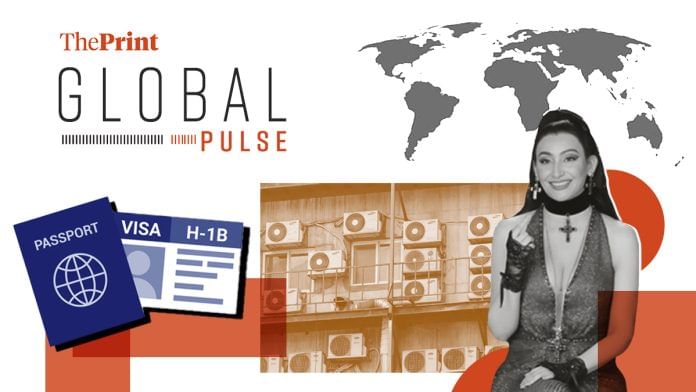New Delhi: Indian art is being bolstered, not by an international market keen to lap up a version of Indian aesthetics but by homegrown buyers, says The Economist in Plot Twist, its weekly culture newsletter.
The article starts by spotlighting the woman who has become the country’s most well-known art-collector, Shalini Passi, the “breakout star” of Netflix show Fabulous Lives of Bollywood Wives.
“Buddha Head dominates Passi’s garden. Inside her house in Delhi there is enough modern and contemporary Indian art to fill a small museum: striking paintings by M.F. Husain, another of India’s most admired artists, hangs alongside prints, photographs and video installations,” reads the piece.
Buddha Head is a sculpture by Subodh Gupta, described as “Damien Hirst of Delhi” in the article.
Indian art itself is having its moment in the sun. The Economist notes that Sotheby’s is selling “several works” by F.N. Souza and that last year a Husain sold for a record $13.8 million. But there are still questions.
Is India merely mirroring the boom heralded by China about two decades ago? “Or is this simply another bubble, like the one Indian art saw two decades ago?”
“Many are happy to make the bull case. The comparison to the boom in 2006-07, they argue, is inapt. ‘Back then,’ says Manjari Sihare-Sutin, Sotheby’s head of Indian and South Asian art, ‘there was this thing about the BRICs’, meaning Brazil, Russia, India and China, ‘and there was lots of speculation’. Western gallerists and art journalists looking for the next big thing came to India; contemporary artists attracted wildly inflated prices,” says the article.
“That boom ended with the global financial crisis of 2007-09. The speculative market crashed and the trend-hunters moved on,” it adds.
In The New York Times, Alex Travelli and Suhasini Raj assess the scale of the damage inflicted by US President Donald Trump’s $100,000 H1B visa application fee.
“The new policy plunked another complication into already difficult US-India trade negotiations. The sudden swings in how it was introduced created deep confusion among potential visa seekers,” says the report, adding that it made one thing clear to students: that the way forward, insofar as it depends on the US, is in jeopardy, and noting “the sense of betrayal” felt by aspirants.
Yet, those who have already acquired H1-B visas are also stressed––and are pacing temple grounds.
“Some of them were celebrating their personal good fortune by walking in circles around the center of a famous temple in Hyderabad, the Chilkur Balaji, not far from an American consulate. One man, a 31-year-old father who lives in Plano, Texas, was circling an idol of the god Balaji 108 times in thanks. His three-year H-1B had been extended earlier that morning. He only talked to us if we agreed not to identify him, worried about saying anything that could jeopardise his visa,” says the report.
In The Guardian, climate justice reporter Nina Lakhani reports that as heatwaves become part and parcel of life, India’s energy demand grows, more electricity is generated, and it becomes increasingly difficult for the country to make the switch to green energy.
“Two-thirds of Indian households experience some form of energy poverty, according to one study, a lack of safe, reliable and affordable energy for lighting, cooking, heating, and other daily activities fundamental for human health and economic prosperity. Now the demand for life-saving cooling among the growing minority lucky enough to afford it is adding further strain on India’s generation capacity and distribution infrastructure – and contributing to the 7% to 8% annual increase in electricity demand,” says the report.
It adds that India is also at the “frontlines” of the climate crisis, and has drawn flak for “not doing enough on climate mitigation from the international community, particularly the industrialised western countries historically most responsible for global heating”.
“India is in absolute terms the third-biggest greenhouse gas emitter after China and the US, but the country rejects this measure as unfair,” writes Lakhani.
“This is not a valid metric, which is why India has argued for a long time about historic responsibility from the perspective of cumulative emissions and a fair share of the carbon budget,” a person with “knowledge of India’s climate negotiations” is quoted as saying in the report.
(Edited by Nida Fatima Siddiqui)
Also Read: Why India-China rivalry persists amid thaw & MiG-21 bows out after ‘decades of admiration & infamy’






